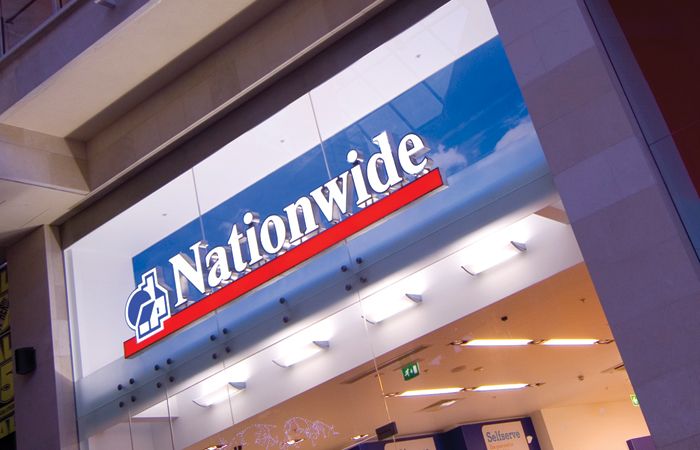
The leasehold sector has always been a murky part of the property market, with leaseholders frequently com-plaining about high service charges, escalating ground rents, unscrupulous freeholders and the extortionate costs of lease extensions.
Yet, to date, nothing has rocked the leasehold world as much as the cladding scandal. The fallout from the Grenfell Tower fire has seen thousands of leaseholders receive five- and six-figure bills to remove flammable cladding from their buildings and fix historical fire safety defects.
The bills have resulted in many flats being downvalued, with owners finding it impossible to either remortgage or sell up.
Government measures on cladding, while a step in the right direction, don’t go far enough
Maxine Burton in Leeds received a bill for £119,000 to pay for fire safety defects identified in her building. She worries that, if she does not pay, the freeholder will forfeit her lease and repossess her flat. Beth Pritchard in Southwark is in a similar situation after receiving a bill for £85,000. She says she feels sick and cannot sleep. Sophie Bichener has been quoted £202,000 to fix her building in Stevenage — not far off the £230,000 she paid for her home originally.
These are just three affected leaseholders who have told their story to the press or on social media. There are thousands more.
So far, after much debate, the government has established a Building Safety Programme to fund making high-rise buildings safe, but remediation work is complex and expensive. The full cost of fire safety remediation work on all affected blocks has been estimated at £15bn, yet government funding announced to date amounts to just £5.1bn.
Who should pay?
The question of who should pay for the necessary work is at the forefront of debate on how quickly the repairs can be carried out, as are the financial implications for residents.
Leaseholders think developers and builders should pay — but the government is yet to introduce any legislation that will force them to do so.
Leasehold reform has been part of the government roadmap for some time
Irwin Mitchell national head of residential property Jeremy Raj says: “Government measures, while a step in the right direction, don’t go far enough.
“If levelling up is about anything, it is about ensuring that homeowners up and down the country are treated fairly and allowed to live safely and securely in their own home without the fear that they’ll be shouldered with much of the remediation and ‘waking watch’ costs, as they have largely been thus far; that those truly at fault are brought to account; and that funds are made available for remediation in the meantime.”
Ray of hope?
Successive housing secretaries have failed to make much headway with cladding — or wider leasehold — issues, but leaseholders have been offered some hope by the new housing secretary, Michael Gove, who replaced Robert Jenrick in prime minister Boris Johnson’s cabinet reshuffle in September.
Gove’s appointment came just weeks after BBC Newsnight dedicated an entire programme to the building safety crisis — but could not persuade a single government minister or spokesperson to take part.
Lenders are still taking a ‘belt and braces’ approach where EWS1 forms are concerned
Gove has said that the government has a responsibility to help leaseholders with the cladding costs, describing the residents as “innocent parties”. He said plans to make flat owners take out loans to pay for the work would be put on pause, and he called the requirement for 24-hour fire patrols “a rip-off”.
As well as enormous bills for cladding remediation, many leaseholders face monthly bills for waking watches, soaring insurance premiums and difficulties with mortgages.
Mortgage lenders have, understandably, become cautious about lending on flats in tower blocks, especially where the building is covered in cladding, or where other fire safety defects have been identified. Their concerns led to UK Finance, the Building Societies Association and the Royal Institution of Chartered Surveyors (Rics) collaborating to create the External Wall Survey — EWS1 — in December 2019. At one point this form had to be completed by a qualified surveyor to enable a mortgage to be approved on any property in a tower block.
EWS1 forms
Following more research and a government directive issued in July 2021, in theory EWS1 forms are now needed for mortgage purposes for flats only in buildings above 18m tall.
But John Charcol mortgage technical manager Nicholas Mendes says this change does not seem to have filtered down through Rics to valuers.
The main concern from lenders about ground rent is the effect on marketability of the property
He says: “Lenders are, as usual, taking the blame for this because they instruct the valuers, but it is more likely to be Rics’ fault. This is because lenders trust the professional assessment that the valuer gives them, and valuers take their guidance from Rics. But some lenders may have issued instructions that aren’t helping.”
Altura Mortgage Finance managing director Rob Gill is also seeing lenders request an EWS1 form in cases where one may not be needed.
He says: “Lenders and their surveyors are still taking a ‘belt and braces’ approach where EWS1 forms are concerned. They tend to demand them if there’s any doubt at all that one could be necessary.
“On the other hand, builders and developers can be over-optimistic in their assessment of whether an EWS1 form is necessary. We’ve seen examples where a builder has categorically stated an EWS1 is not necessary, even to the extent of providing misleading answers to clear questions from the lender, only for the surveyor to confirm that it is.
“This is hugely frustrating for the borrower and can create substantial delays while the builder makes the necessary arrangements.”
Lenders are, as usual, taking the blame for this because they instruct the valuers, but it is more likely to be Rics’ fault
According to SPF Private Clients chief executive Mark Harris, in some cases it is still possible to obtain a mortgage where there is an element of cladding on a property.
“Following the fire-risk assessment and completion of the EWS1, the qualified professional will provide the block with a rating. A1, A2 and B1 are normally acceptable ratings for the lender and confirm that no remedial works are required,” he explains.
However, leaseholders who have received, or expect to receive, a bill for cladding remediation have little chance of selling their flat, even if mortgage lenders play ball. Any buyer would be wary of buying a property where it was clear there was a significant demand for cash on the way.
As a result, many leaseholders are trapped in their homes and are unable to sell. By default, they are also unable to move on with their lives in terms of changing job, separating from an ex-partner, having children or moving abroad.
Meanwhile, some experts are becoming increasingly concerned about whether mortgage lenders could go bust due to the cladding crisis. The Bank of England’s Prudential Regulation Authority is reviewing the extent of lenders’ exposure to potentially unsafe leasehold flats.
The move comes after MPs were warned earlier this year that mortgage lenders could end up seeing more borrowers in arrears if people were unable to pay their mortgage due to the costs of remediation work to their blocks.
Ground rent rescue
Among the doom and gloom, the past few months have also seen some positive news for leaseholders. Before the cladding scandal, the big issue in leasehold was ground rents. Developers such as Bellway, Countryside Properties, Persimmon and Taylor Wimpey sold houses on long leases, rather than as freehold, and wrote escalating ground rents into those leases.
Builders and developers can be over-optimistic in their assessment of whether an EWS1 form is necessary
Ground rents on new-build houses typically began at £250 or £500 a year, but either doubled periodically or rose in line with RPI inflation. These increases quickly made a property unaffordable for its owner, and thus unmortgageable and tricky to sell.
With developer-recommended conveyancers often failing to explain the implications of ground rent clauses, many leaseholders felt they had been missold their home. Meanwhile, the freeholds to people’s homes were quietly sold off to investors, rather than offered to leaseholders as promised in the sales process.
In September the Competition & Markets Authority finally clamped down on one of the biggest offenders in leasehold abuse: Countryside Properties. The regulator forced the developer to strike out the doubling of ground rent terms, even in leases where it had sold on the freehold.
This means ground rents designed to double every 10 or 15 years will no longer increase but remain at the amount charged when customers first bought their home.
Some lenders may have issued instructions that aren’t helping
Harris says: “The main concern from lenders is the effect on marketability of the property. Some terms, such as the ground rent being greater than or equal to 0.5% of the property value, will result in a decline with most lenders.
“Unfortunately, any issues like this are normally highlighted later in the mortgage process following the valuation or during the legal work.
“Leasehold reform including ground rents has been part of the government roadmap for some time, with future legislation planning to cap the treatment of ground rents at 0.1% of the freehold value.”



